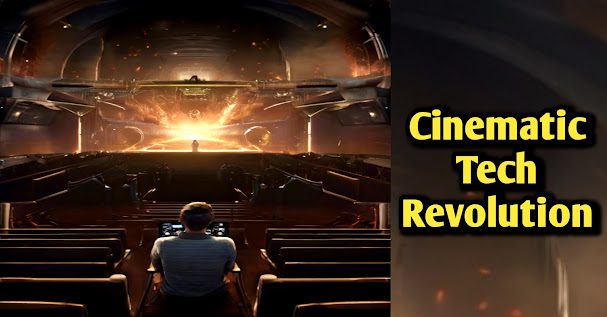Cinematic Tech Revolution: Unleashing
the Movie Magic of Tomorrow!
Introduction:
In the ever-changing world of the movie industry, technology is a kind of silent but dominant hero that has totally revolutionized how tales are narrated and experienced. The landscape of film has since transitioned from silent films all the way to CGI and virtual reality; technology remained crucial in shaping it. This article considers the numerous aspects of technology's importance in film-making and its ongoing challenge to narrative limits.
Enhanced Visual Storytelling:
The most notable advance made by technology to film is that visual storytelling has caused a rise. Since the times when film cameras were used to create black and white pictures until modern HD and beyond there have been changes in camera technologies that play a key part for creatives. Progress in cinematography has not only brought improvements to the visual quality and functionality of films but also enabled directors to a whole new level of artistic faculties, establishing a platform for more sensitive emotional presentations as well as finer ways of creating the stories.
Special Effects and CGI:
The special effects and CGI also changed the vision by which filmmakers bring their imagined creations to a screen. Mythological beings, unprecedented sceneries; CGI has created a new dimension in which myths and fantasies are real. This technology has not only contributed to the aesthetics but also made movies possible that cinematically would have been impossible.
Digital Cinematography:
The beginning era of analog cinema as opposed to digital cinematography has made filmmaking more open. With digital cameras, the filmmakers have more options of choosing among numerous attempts that cannot be bound to physical rolls of films. Thus, independent filmmaking at lower costs can generate high-quality productions providing a rich and diverse cinematic universe for those participating in its creation.
Editing and Post-Production
Advancements:
Thus, the post-production period within filmmaking is greatly reduced due to technological advancements. The nonlinear editing systems, digital sound designing, and color grading software provide tremendous potential to movie makers. How saves can be applied and the editable effects added to create a more swift, seamless post-production procedure.
Virtual Production Techniques:
A range of new technologies in virtual production, including LED wall and real-time rendering has entirely challenged the entire course of the filming process. This type of technology allows cinematographers to shoot in virtual environments that offer freedom and productivity which one can only dream about. Contrastingly, films like "The Mandalorian"(2019) have highlighted the capacity of such technology and how it can reshape filmmaking itself.
Global Distribution and Streaming
Platforms:
The advent of technology not only influenced the various aspects of art in filmmaking but also transformed distribution. Streaming platforms and digital distribution channels, in turn, interfere with the traditional models by bringing modern films nearer to a global audience. This transformation of distribution has democratized this industry and thus provides more people with opportunities to display their messages through television sets all across.






0 Comments